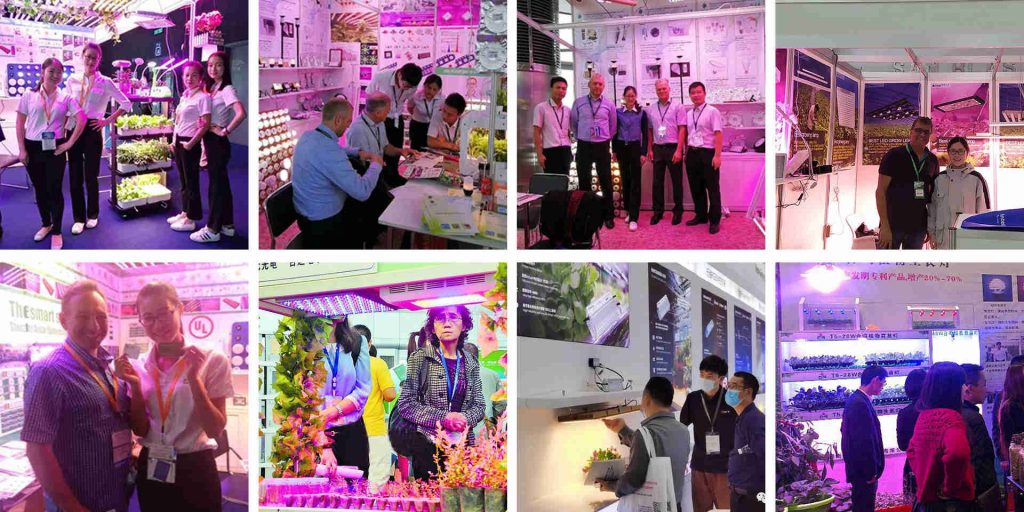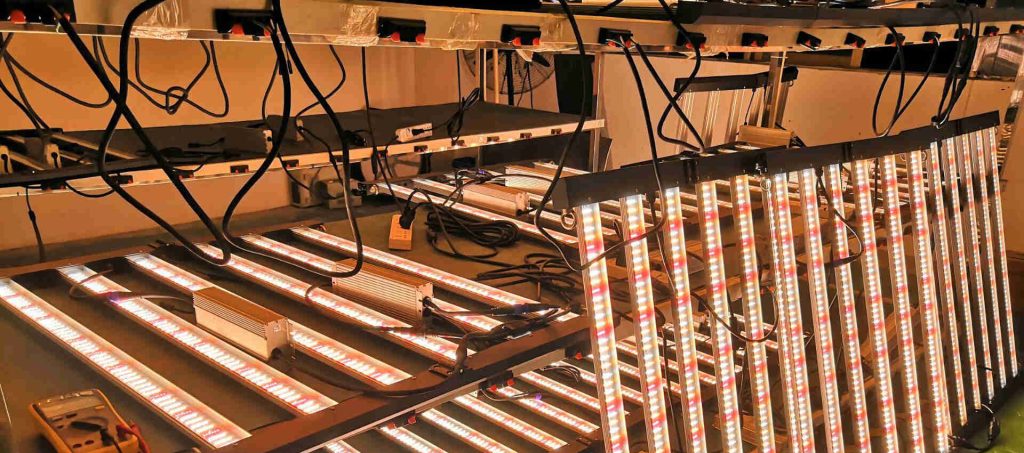Cornell University explains CEA.
Controlled Environment Agriculture (CEA) is an advanced form of intensive hydroponic agriculture in which plants are grown in a controlled environment to optimize horticultural practices.
CEA technology is no simpler than the old system of growing plants. In fact, they need to have a good understanding of chemistry, horticulture, engineering, plant physiology, plant pathology, computers and entomology. To successfully operate a CEA production in a research or commercial setting requires a broad range of skills as well as a natural tendency to pay attention to detail.
importance
Consumers today increasingly demand fresh, high-quality vegetables that are free from pesticides and other agrochemicals. Local production is also a major factor in buying fresh vegetables. In the United States and in many parts of the world, the climate makes it impossible to meet this demand year-round with local produce alone. Products imported into the U.S. may come from other parts of the U.S. (California, Florida, and Texas are the main exporting states) or from other countries (mainly Mexico, the Netherlands, and Israel).
When fresh produce is transported long distances, quality can suffer significantly. Furthermore, the energy demands of transportation can be enormous. Local production at CEA facilities may also require significant energy inputs for heating, ventilation and possibly supplementary lighting. Studies have shown that the (non-solar) energy required to grow and transport fresh produce at least 1,000 miles is equivalent to the energy required to produce it locally at CEA facilities in cold, cloudy climates such as the Northeast and northern Midwest.
Transportation depends on liquid fuels, and the price of liquid fuels is expected to rise faster than the general rate of inflation. Production at China Eastern’s facilities relies on electricity and natural gas, prices of which are not expected to rise faster than inflation. These factors suggest that EPA-produced fresh vegetables could become an important part of commercial farming in the coming decades.

Benefits to Consumers
Well-managed local CEA businesses can provide high-quality fresh produce (as well as flowers or medicinal plants) free of agrochemicals. In addition, CEA facilities can be closed to allow the discharge of liquids to surface water or groundwater. CEA facilities can also be located in urbanized areas, so there is no need to turn vacant land or farmland into greenhouses. CEA facilities increase the local tax base and the community’s net income.
Benefits to Agriculture
Certain sectors of the agricultural industry face increasingly difficult economic outlooks. This is especially true of the dairy industry. Diversification is one means to improve the economic stability of small farmers and CEA is an option to diversify. Furthermore, many family farms can not be divided among two or more children wishing to remain in agriculture. Adding a robust CEA facility provides the opportunity for more than one child to remain.
Benefits to Utilities
The two most important environmental variables for growing plants are temperature and light. Both parameters must be controlled to be uniform from one location to another in a greenhouse, and consistent from day to day. The only method available to achieve consistency is to use supplemental lighting. Where the climate is cloudy, electricity needed yearly for suitable lighting can be as much as one hundred kilowatt-hours per square foot of lighted area. This load is primarily during off-peak hours and can be interrupted for short periods. These features should make CEA electricity loads highly attractive to many local utilities.
A Brief History of CEA
CEA, or Controlled Environment Agriculture is a combination of horticultural and engineering techniques that optimize crop production, crop quality, and production efficiency (Albright, 1990). Dalrymple (1973) found the earliest known CEA production in recorded history was mandated by the Roman Emperor, Tiberius Caesar (between 14 – 37 A.D.). Caesar’s doctor told him he needed a cucumber a day for good health. So, movable plant beds were placed outside during favorable weather, and brought indoors during unfavorable weather. During winter, on sunny days, the beds were covered with a frame glazed with transparent stone (mica) and brought outdoors.

Greenhouse production of food (again cucumbers) is next recorded in 1597. In the 1500’s lantern covers were placed over small areas of ground and used to force vegetables. By 1670 greenhouse structures similar to those used today were described. These early European greenhouses utilized wood frames with either glass or oiled paper (Dalrymple, 1973).
In the United States, greenhouses were present near the time of the American Revolution. This included George Washington’s conservatory at Mount Vernon, which was built in 1780. The heat source for early American greenhouses was usually from heat produced by the decomposition of manure (Dalrymple, 1973). By 1900, most greenhouse heat came from heated-water systems. Efficient boilers and improved heating systems were developed by the turn of the 20th century (Langhans, 1990). However, a critical component to year-round success was still missing.
In 1887, growers in the United States were advised in The American Florist to refrain from growing tomatoes in greenhouses until April, because “You can’t make sunshine” (Starr, 1887). Making “sunshine” had become possible with the invention of the incandescent lamp by Thomas Edison in 1879, but widespread use of electric lamps did not occur until the early 1900’s after many small power plants and generators were in place (World Book Encyclopedia, 1997).
The first scientific experimentation on the influence of supplemental light on a greenhouse crop was performed at Cornell University by Liberty Hyde Bailey in 1889 (Dalrymple, 1973; Bailey, 1891). The practice was termed “Electro-culture”, and was documented as significantly improving crop production, but was not considered economically feasible for food production. Even today, only crops with relatively high monetary value (e.g., spinach, raspberries, tomato, specialty lettuce crops) can justify the additional production cost from the use of supplemental electric light. In the 1960’s, work at the ARS Phyto-Engineering Laboratory, USDA in Beltsville, MD showed significant increases in lettuce, tomato and cucumber seedling growth through the use of plant growth chambers (Krizek, 1968).
From the mid 1980’s through the late 1990’s, NASA conducted plant growth chamber research in the Kennedy Space Center Biomass Production Chamber, providing state of the art levels of environmental control and monitoring of food crop production in this Martian Base prototype facility. Plant research in the NASA Biomass Production Chamber has provided evidence that the nutritive value of food crops can be as good or better than field grown crops (Wheeler et al, 1996; Wheeler et al, 1997). Other researchers have noted the increased nutritional benefits of CEA crops (McKeehen et al, 1996; Mitchell et al., 1996; Nielson et al., 1995; Johnson, 2000).
In 1999, the Cornell University CEA Program broke ground on the first commercial scale CEA prototype lettuce production facility in Ithaca, New York. The facility has a production capacity of 1245 heads of high-quality lettuce per day. The prototype facility represents the transition stage from CEA Research to commercial scale production.
Cornell CEA today
Cornell’s current CEA collaborations are housed in the Horticulture Section of the School of Integrative Plant Science in the College of Agriculture and Life Sciences, under the leadership of Neil Mattson. One major effort has been the formation of GLASE—the Greenhouse Lighting and Systems Engineering Consortium
The GLASE Consortium was established in 2017 by Cornell University and Rensselaer Polytechnic Institute, and is supported by the New York State Energy Research and Development Authority (NYSERDA) and by industry partners. GLASE develops advanced greenhouse lighting and control systems tailored to the needs of specific greenhouse and indoors cultivated crops. The consortium’s work extends to all areas of the CEA lighting environment, integrating advances in LED light engineering, carbon dioxide enrichment, and lighting control systems.
The public-private collaboration merges leading-edge academic research with the marketplace expertise of industry practitioners. GLASE partners are CEA growers, horticulturists, produce buyers, plant physiologists, lighting manufacturers, and agriculture engineers—all committed to pioneering and commercializing breakthrough greenhouse technology.
For more information on controlled environment agriculture you can post questions below or contact Professor Neil Mattson or Erico Mattos at Cornell University.
BBIER®, Professional Commercial odm Grow Lights, oem Grow Lights, private label Grow Lights, bespoke Grow Lights, customized Grow Lights, custom Grow Lights, Grow Lights solutions, Grow Lights service, Grow Lights manufacturing, Grow Lights companies, Grow Lights inc, Grow Lights fabrication, Grow Lights traders, Grow Lights agencies, Grow Lights dealers, Grow Lights makers, Grow Lights distributors, Grow Lights exporters, Grow Lights bulks, Grow Lights wholesales, Grow Lights factories, Grow Lights manufacturers. We have over 13 years of commercial lighting R&D experience, 50+ LED lights patents, 200+ LED Lights Certifications, Support OEM & ODM, 5 Years Warranty.

